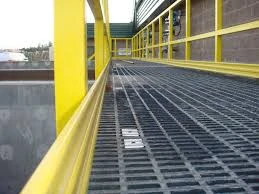
-
 Afrikaans
Afrikaans -
 Albanian
Albanian -
 Amharic
Amharic -
 Arabic
Arabic -
 Armenian
Armenian -
 Azerbaijani
Azerbaijani -
 Basque
Basque -
 Belarusian
Belarusian -
 Bengali
Bengali -
 Bosnian
Bosnian -
 Bulgarian
Bulgarian -
 Catalan
Catalan -
 Cebuano
Cebuano -
 China
China -
 China (Taiwan)
China (Taiwan) -
 Corsican
Corsican -
 Croatian
Croatian -
 Czech
Czech -
 Danish
Danish -
 Dutch
Dutch -
 English
English -
 Esperanto
Esperanto -
 Estonian
Estonian -
 Finnish
Finnish -
 French
French -
 Frisian
Frisian -
 Galician
Galician -
 Georgian
Georgian -
 German
German -
 Greek
Greek -
 Gujarati
Gujarati -
 Haitian Creole
Haitian Creole -
 hausa
hausa -
 hawaiian
hawaiian -
 Hebrew
Hebrew -
 Hindi
Hindi -
 Miao
Miao -
 Hungarian
Hungarian -
 Icelandic
Icelandic -
 igbo
igbo -
 Indonesian
Indonesian -
 irish
irish -
 Italian
Italian -
 Japanese
Japanese -
 Javanese
Javanese -
 Kannada
Kannada -
 kazakh
kazakh -
 Khmer
Khmer -
 Rwandese
Rwandese -
 Korean
Korean -
 Kurdish
Kurdish -
 Kyrgyz
Kyrgyz -
 Lao
Lao -
 Latin
Latin -
 Latvian
Latvian -
 Lithuanian
Lithuanian -
 Luxembourgish
Luxembourgish -
 Macedonian
Macedonian -
 Malgashi
Malgashi -
 Malay
Malay -
 Malayalam
Malayalam -
 Maltese
Maltese -
 Maori
Maori -
 Marathi
Marathi -
 Mongolian
Mongolian -
 Myanmar
Myanmar -
 Nepali
Nepali -
 Norwegian
Norwegian -
 Norwegian
Norwegian -
 Occitan
Occitan -
 Pashto
Pashto -
 Persian
Persian -
 Polish
Polish -
 Portuguese
Portuguese -
 Punjabi
Punjabi -
 Romanian
Romanian -
 Russian
Russian -
 Samoan
Samoan -
 Scottish Gaelic
Scottish Gaelic -
 Serbian
Serbian -
 Sesotho
Sesotho -
 Shona
Shona -
 Sindhi
Sindhi -
 Sinhala
Sinhala -
 Slovak
Slovak -
 Slovenian
Slovenian -
 Somali
Somali -
 Spanish
Spanish -
 Sundanese
Sundanese -
 Swahili
Swahili -
 Swedish
Swedish -
 Tagalog
Tagalog -
 Tajik
Tajik -
 Tamil
Tamil -
 Tatar
Tatar -
 Telugu
Telugu -
 Thai
Thai -
 Turkish
Turkish -
 Turkmen
Turkmen -
 Ukrainian
Ukrainian -
 Urdu
Urdu -
 Uighur
Uighur -
 Uzbek
Uzbek -
 Vietnamese
Vietnamese -
 Welsh
Welsh -
 Bantu
Bantu -
 Yiddish
Yiddish -
 Yoruba
Yoruba -
 Zulu
Zulu
mandrel
Understanding the Role of Mandrels in Manufacturing
In the world of manufacturing and engineering, the term mandrel refers to a crucial tool utilized in various processes, especially in the shaping and forming of materials like metal and plastic. A mandrel is a support device that maintains the shape of a workpiece during machining, bending, or forming operations, ensuring precision and quality in the final product. This article explores the significance of mandrels, their types, applications, and best practices in using them.
Mandrels come in various types, each designed for specific applications. One of the most common types is the adjustable mandrel, which can be modified to fit different sizes of workpieces. This flexibility is essential in industries that deal with varying shapes and sizes, allowing for efficient production without the need to switch out tools constantly. Another common type is the solid mandrel, often used for tasks requiring high levels of precision. Solid mandrels provide stability and accuracy, making them ideal for intricate machining processes.
The applications of mandrels are vast and span multiple industries. In metalworking, mandrels are used in operations such as turning, milling, and grinding. They help secure a workpiece in place, enabling consistent and repeatable results. In the automotive industry, mandrels play a vital role in the fabrication of exhaust systems and structural components, where precise bends and shapes are necessary for performance and fit. Additionally, mandrels are used in the production of composite materials, substituting as a form around which the material can be molded.
mandrel

One significant advantage of using mandrels is that they improve the overall quality of the workpiece. By providing support and maintaining the desired shape during machining processes, mandrels help prevent deformation or distortion, which can occur with unsupported workpieces. This is particularly important in industries where tolerances are tight and quality control is paramount.
Safety and efficiency are also improved when using mandrels. Properly secured workpieces increase the safety of operators by reducing the risk of parts becoming loose or dislodged during machining. This, in turn, minimizes the chances of accidents, making the workplace safer for everyone involved. Furthermore, mandrels can enhance efficiency by allowing for quicker setups and reducing the need for frequent adjustments, ultimately leading to time and cost savings.
When utilizing mandrels, it is essential to adhere to best practices to achieve optimal results. Firstly, selecting the right type of mandrel for the specific application is crucial. Considerations such as the material being worked on, the required precision, and the complexity of the shape will guide this choice. Additionally, regular maintenance and inspection of mandrels are vital in ensuring they remain in good condition, which will translate to consistent performance and extend their lifespan.
In conclusion, mandrels are indispensable tools in the manufacturing realm, providing support and precision in various processes. Their versatility allows them to be used across different industries, from metalworking to automotive production. By understanding the types of mandrels and their applications, manufacturers can significantly enhance their production quality, efficiency, and safety. As technology advances, the role of mandrels will likely evolve, continuing to be an integral component in precise manufacturing processes.









